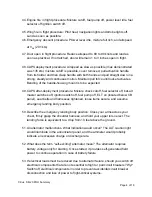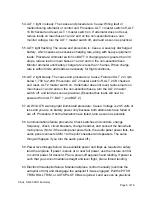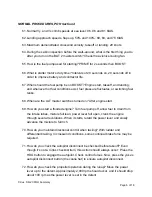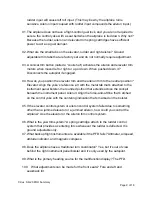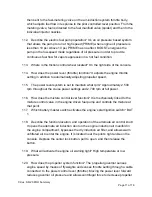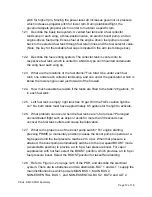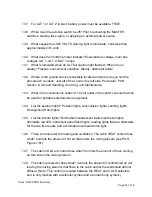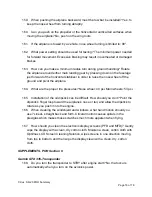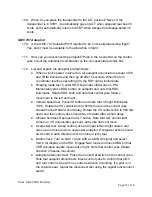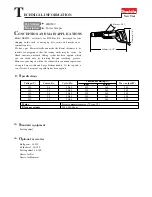
84.Refer to Flight Planning on page 5-14 of the POH. Using the Sample Problem’s
configuration and conditions, confirm the answers given for takeoff, climb, cruise,
fuel required, and landing by using figures 5-15 through 5-32. (This is a practical
exercise to ensure your understanding of the performance charts).
85.When using the alternate static air system and flying at 80 KIAS, what is the
KCAS with 100% flaps? 72 KCAS.
86.When using the alternate static air system and flying at 80 KIAS at sea level,
what is the altitude correction with 50% flaps? Subtract 7 feet.
WEIGHT AND BALANCE, POH Section 6
87.Is OCFC’s N699YZ legal to fly based on the following information? Yes, but the
airplane is at its forward CG limit.
Basic empty weight: 2145 lbs.
Empty moment/1,000: 306.211
Fuel: 56 gallons useable
Pilot: 210 lbs.
Front seat passenger: 170 lbs.
Rear seat passenger: 140 lbs.
88.Just after takeoff in the previous problem, the pilot realizes that his wallet (pilot
certificate and medical) is in his car. Is he legal to immediately return and land?
Yes, the maximum landing weight is 3,150 lbs.
AIRPLANE AND SYSTEMS DESCRIPTION, POH Section 7
89. The airplane is made from composite materials for aerodynamic efficiency. What
material is used for the rudder, elevator, ailerons, and wing flaps? Aluminum.
90.What is the rudder-aileron interconnect? It provides a maximum of 8° down
aileron with full rudder deflection. Right rudder will cause right roll input and left
Cirrus SR-20 POH Summary
Page 8 of 18




